Cabling
Structured Cabling System
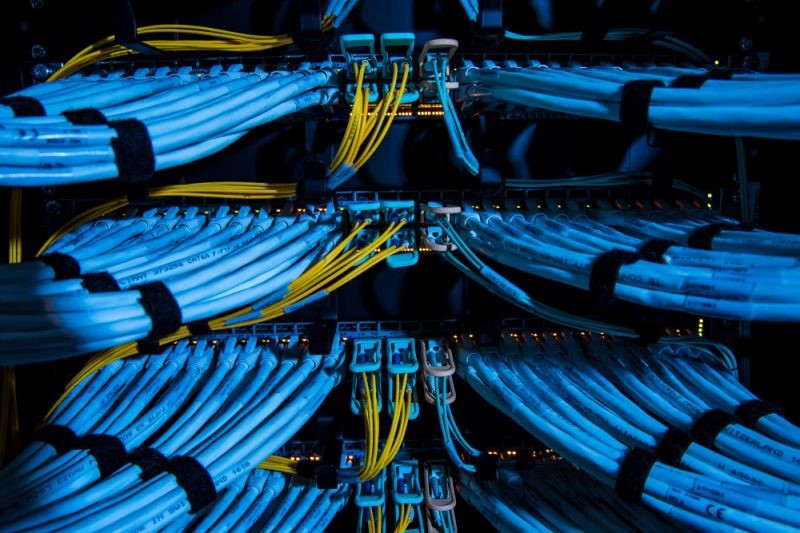
Computer networks require complicated and specific cabling, particularly in business or academic settings. The cables used in cabling the networks must be made from certain materials. Backbone cabling and horizontal cabling are two main cabling methods used in today’s structured cabling system and neither is dispensable. Since backbone cabling and horizontal cabling have many differences, cables used these two structured cabling systems are also different from each other. Backbone cabling vs horizontal cabling: what’s the difference between them? What kind of cables are suitable for backbone cabling and horizontal cabling? The knowledge will be introduced in this article.
PT. Revo Solusindo also provides solutions to our clients for network cabling, fiber optic cabling, data center cabling, office relocation and an entire scope of services with regard to installing security service solutions.
 We provide integrated solutions for cabling solutions from design, material and material determination, material supply, installation, service and support to warranty support. Integrated solutions are an inseparable part of our services and are end to end solutions. The integrity of this solution becomes very important for us to ensure quality service to our clients.
We provide integrated solutions for cabling solutions from design, material and material determination, material supply, installation, service and support to warranty support. Integrated solutions are an inseparable part of our services and are end to end solutions. The integrity of this solution becomes very important for us to ensure quality service to our clients. Integrated solutions that are end to end solutions can only be provided optimally and satisfactorily to the client if done by experts who are well educated in the field of data cabling, proven through certification from the principal and supported by expertise honed through experience in handling cabling projects. This is the best guarantee we provide for the quality of the solutions we implement.
Integrated solutions that are end to end solutions can only be provided optimally and satisfactorily to the client if done by experts who are well educated in the field of data cabling, proven through certification from the principal and supported by expertise honed through experience in handling cabling projects. This is the best guarantee we provide for the quality of the solutions we implement. With the support of our principals and distributors we guarantee a 25 year performance warranty on the data cabling solutions that we have provided to you. Of course, on the condition that the data cabling solution we propose is an integrated and end-to-end solution. The guarantee we provide is a proof of the totality of our commitment to the quality of the solutions we provide to you.
With the support of our principals and distributors we guarantee a 25 year performance warranty on the data cabling solutions that we have provided to you. Of course, on the condition that the data cabling solution we propose is an integrated and end-to-end solution. The guarantee we provide is a proof of the totality of our commitment to the quality of the solutions we provide to you. We have full testing and reporting services through the use of world renowned testing devices to giving you peace of mind that your cable network is working at its optimal performance. Our Certified Structured Cabling Specialists can document and test your wiring using state-of-the-art test equipment for copper and fiber optic cabling from manufacturers like Fluke, OTDR etc.
We have full testing and reporting services through the use of world renowned testing devices to giving you peace of mind that your cable network is working at its optimal performance. Our Certified Structured Cabling Specialists can document and test your wiring using state-of-the-art test equipment for copper and fiber optic cabling from manufacturers like Fluke, OTDR etc. Documentation; Project documentation covers documents created during and for the project itself. Examples include the overall project vision, the project plans, the schedule, and the risk analysis such as As built documentation (blueprint) of the structured cabling and implemented network setup/configuration, Aerial and Underground Connections, Networking Hardware, Racks & Cabinets, Mapping, CAD and Visio Diagramming, Labeling.
Documentation; Project documentation covers documents created during and for the project itself. Examples include the overall project vision, the project plans, the schedule, and the risk analysis such as As built documentation (blueprint) of the structured cabling and implemented network setup/configuration, Aerial and Underground Connections, Networking Hardware, Racks & Cabinets, Mapping, CAD and Visio Diagramming, Labeling.1. Backbone Cabling & Horizontal Cabling
To understand backbone cabling and horizontal cabling, let’s understand the five subsystems of structured cabling firstly. These five subsystems are often found throughout a building and are connected together so that various types of data can be transmitted consistently and securely.
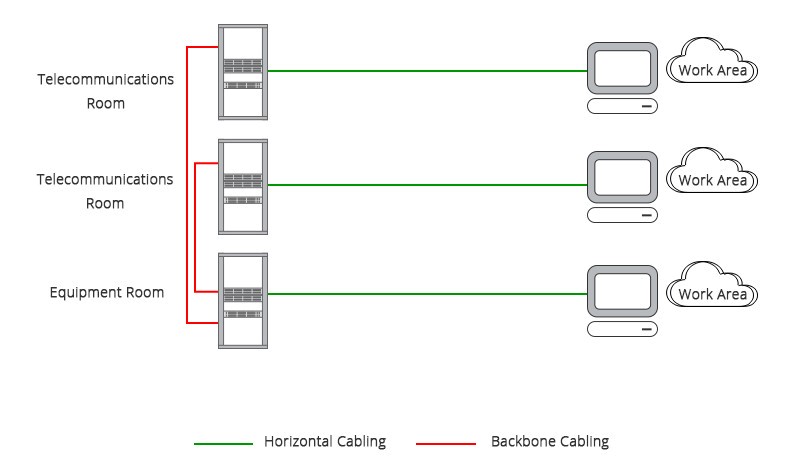
- Equipment Room: A room with equipment that serves the users inside the building.
- Telecommunications Room: This room contains the telecommunications equipment that connects the backbone and horizontal cabling subsystems.
- Backbone Cabling: A system of cabling that connects the equipment rooms and telecommunications rooms.
- Horizontal Cabling: The system of cabling that connects telecommunications rooms to individual outlets or work areas on the floor.
- Work Area Components: These connect end-user equipment to outlets of the horizontal cabling system.
A. Bacbone Cabling
The backbone cabling is also called vertical cabling or wiring. It provides interconnection between telecommunication rooms, equipment rooms and entrance facilities. These backbone cablings typically are done from floor to floor to floor. When setting up backbone cabling, several types of media can be used: unshielded twisted-pair (UTP) cable, shielded twisted-pair (STP) cable, fiber optic cable, or coaxial cable. Equipment should be connected by cables of no more than 30 meters (98 feet).
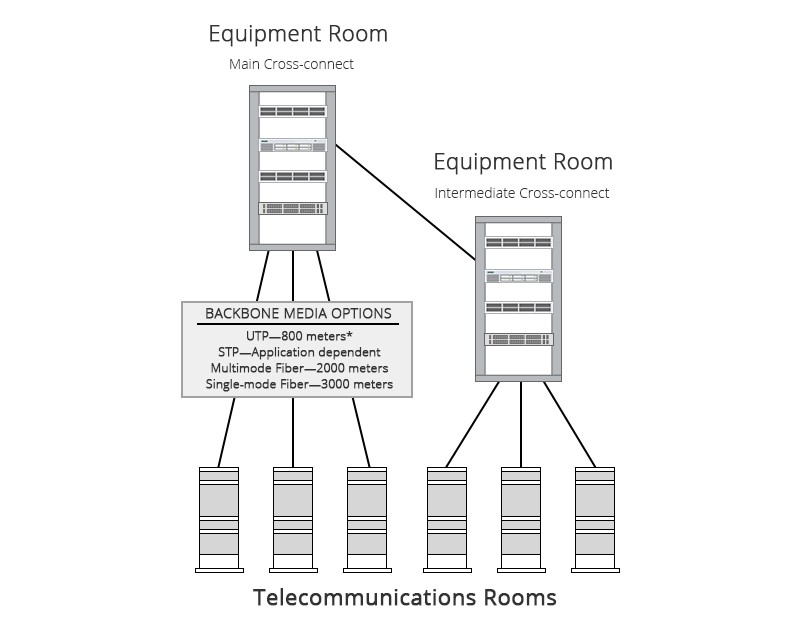
With the emerge of Gigabit Ethernet and 10 Gigabit Ethernet, fiber optic cable is the most appropriate choice for backbone cabling since they provide much higher bandwidth than traditional Cat5, Cat6 or even Cat7 twisted pair copper cables. Another advantage of fiber is that fibers can run much longer distance than copper cable, which makes them especially attractive for backbone cabling.
B. Horizontal Cabling
The horizontal cabling system extends from the work area’s telecommunications information outlet to the telecommunications room (TR) or telecommunications enclosure (TE). As shown in the figure below, horizontal cabling is usually installed in a star topology that connects each work area to the telecommunications room. It includes the telecommunications outlet, an optional consolidation point, horizontal cable, mechanical terminations and patch cords (or jumpers) located in the TR or TE.
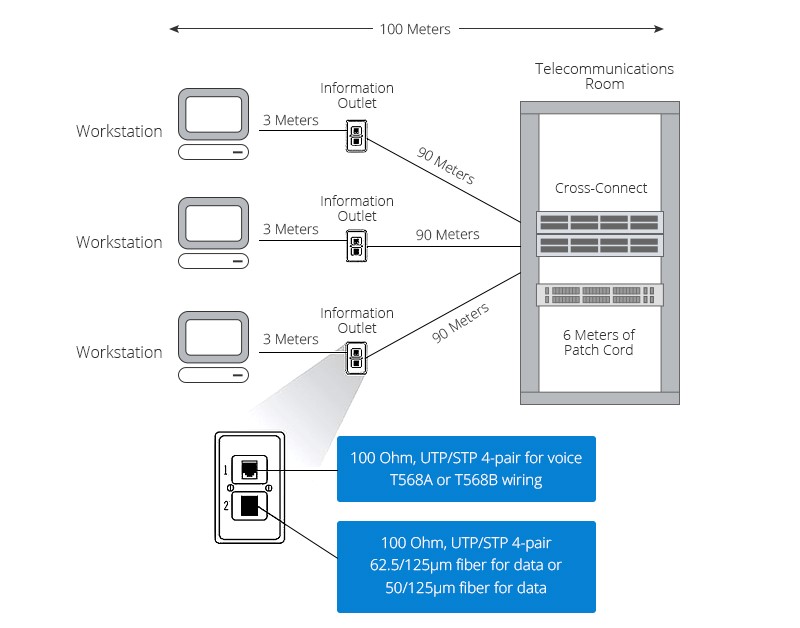
Both Ethernet cable and fiber optic cable can be used for horizontal cabling. Four-pair 100-ohm unshielded twisted-pair (UTP) cable (Cat5e cable, Cat 6 cable or Cat6A cable) is usually recommended for voice and fiber optic cable (two-fiber 62.5/125-micron or 50/125-micron multimode cable, or higher fiber count ) is commonly used for data transmission. To comply with EIA/TIA wiring standards, individual cables should be limited to 90 meters in length between the outlet in the work area and the patch panels in the telecommunications room. Patch cords for connecting the patch panel to hubs and switches in the telecommunications room should be no longer than 6 meters total distance. Cables connecting users’ computers to outlets should be limited to 3 meters in length.
2. ICT Network
PT. Revo Solusindo provide premium quality products, system solutions, and services for electrical and communications infrastructures in buildings, data centers, and GPON.
With outstanding products and system solutions, we set standards for quality, performance and investment protection.
- Copper Technology
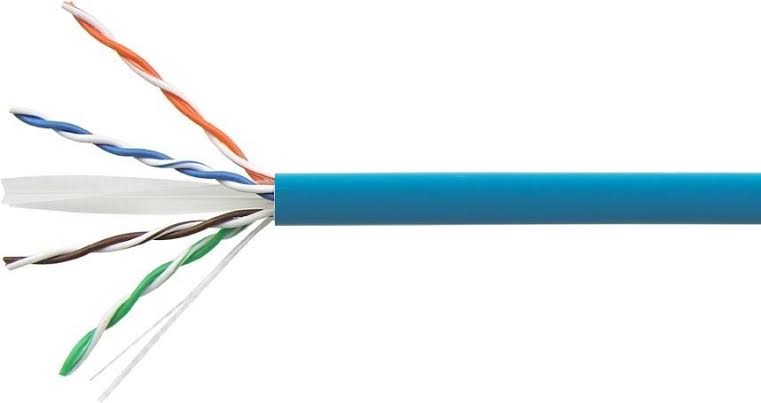 PT. Revo Solusindo provides copper cables UTP CAT 5E, CAT 6, and the accessories. These copper solutions meet standards for quality, reliabilty and performance. Our copper cabling systems can always keep up with the constantly increasing transfer rates and exploit the full potential of networks. Thus, they offer high investment security for the future.
PT. Revo Solusindo provides copper cables UTP CAT 5E, CAT 6, and the accessories. These copper solutions meet standards for quality, reliabilty and performance. Our copper cabling systems can always keep up with the constantly increasing transfer rates and exploit the full potential of networks. Thus, they offer high investment security for the future.The comprehensive product range extends from single cables and components to complete end-to-end systems. The modular solutions are suitable for all sizes and types of Local Area Networks (LANs) and for data centres.
- Fiber Optic Solution
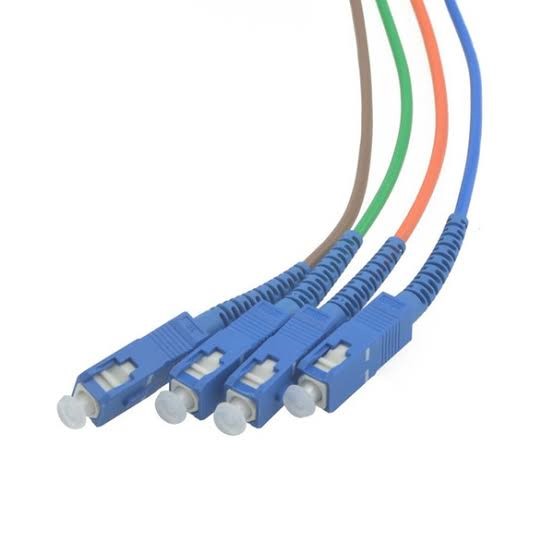 PT. Revo Solusindo also supplies complete fibre-optic cabling solutions. We provide services in the area of consultation, planning, engineering, design, development, training, installation and documentation.
PT. Revo Solusindo also supplies complete fibre-optic cabling solutions. We provide services in the area of consultation, planning, engineering, design, development, training, installation and documentation. Our comprehensive fibre-optic technologies and solutions include the entire range of applications in long distance (WAN), metropolitan (MAN), FTTx outdoor and in-house as well as structured premises cabling (LAN) and high-density, high-speed data centre solutions.
Partner In Copper & Fiber Optic Solution
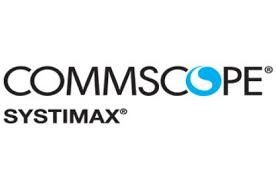


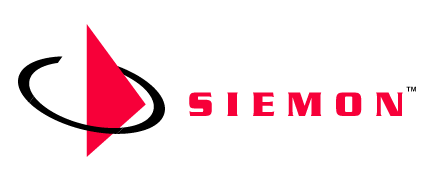
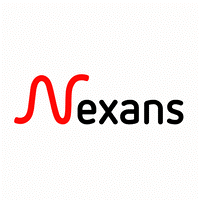
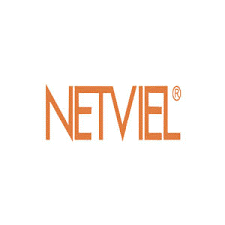

C. IT Cabinet & Rack
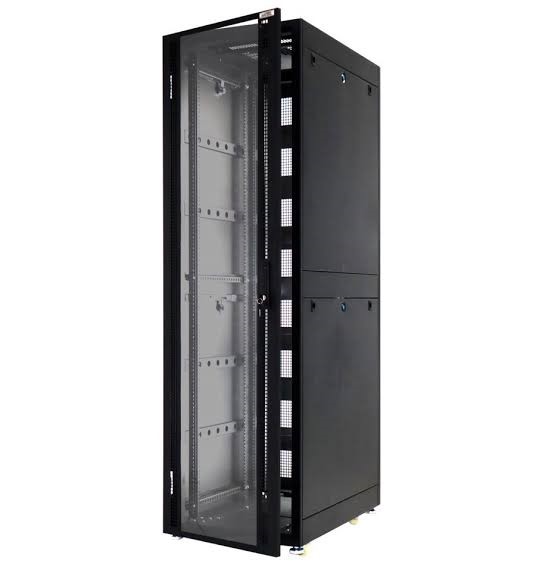
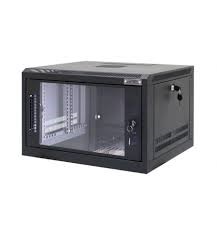
Rack and cabinet that we offer increase the lifespan of your devices and security. The racks are varied according to the requirements of the customers. The IT racks that we provide are according to the international standard of cooling concept, cabling, and security requirements.
Partner in Rack Solution



3. GPON
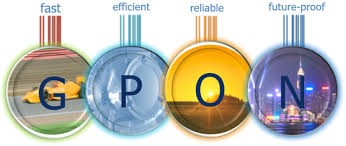 GPON is a point-to-multipoint access network. Its main characteristic is the use of passive splitters in the fiber distribution network, enabling one single feeding fiber from the provider to serve multiple homes and small businesses.
GPON is a point-to-multipoint access network. Its main characteristic is the use of passive splitters in the fiber distribution network, enabling one single feeding fiber from the provider to serve multiple homes and small businesses.GPON has a downstream capacity of 2.488 Gb/s and an upstream capacity of 1.244 Gbp/s that is shared among users. Encryption is used to keep each user’s data secured and private from other users. Although there are other technologies that could provide fiber to the home, passive optical networks (PONs) like GPON are generally considered the strongest candidate for widespread deployments.
| TYPICAL GPON NETWORK |
 GPON is specified to be a single or dual fiber system, but almost all GPON systems are single fiber like virtually all popular FTTH technologies. There is little reason to use dual fibers, although this option is indeed allowed in the standard. |
| TYPICAL GPON NETWORK WITH RF OVERLAY |
 The RF overlay incorporates standard and high definition video into the fiber network using the 1550nm transmitter and EDFA. For cost savings, this topology is often used over the GPON IP solution. |
Why GPON ?
With technology constantly growing, and end users demanding faster internet speed, fiberoptic technology is the absolute way to go. Fiber to the Home (FTTH) networks continue to be in high demand because of this. Fiber cables are the only thing that can support the demand for higher speeds as well as distance within networks. Fiber optic cables have another advantage over metal cables, such as copper, in that they are less susceptible to interference. Spark hazards are always a possibility when using a metal cable to transmit signal. Small sparks can occur when sending electric potentials down a metal medium, these small sparks have the potential to cause shortages. By using GPON fiber optic cables, this will eliminate that hazard due to no current being transmitted. With a single optical fiber being able to support multiple users due to the use of passive optical splitters makes GPON an advantage by reducing equipment, satisfying high density areas as well as supporting triple play service; voice, date and IP video at the demanding rate of the public.
4. Other Service
- CABLE TESTING AND CERTIFICATION
- FIBER OPTIC SPLICING
- ABANDONED CABLE REMOVAL
- FIRESTOPPING
- ACCESS CONTROL
- VIDEO SURVEILLANCE